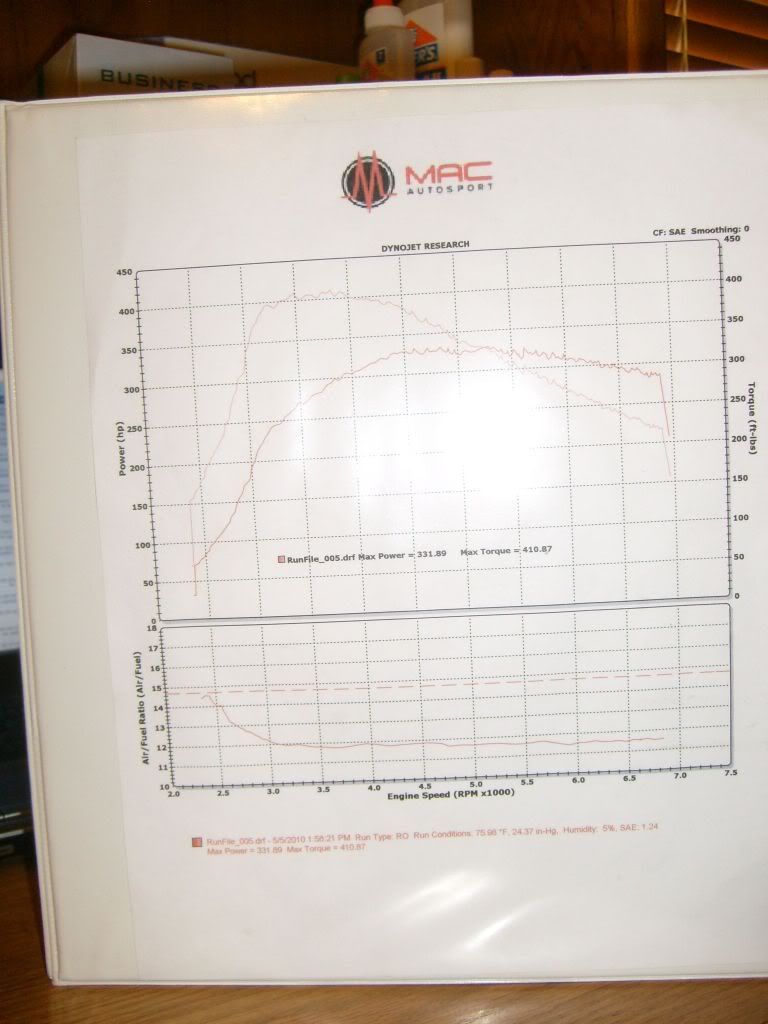04 STi: Stock VF39 331whp/411wtq
Thread must include:
Dyno: Dynojet (Stock STi 230whp/235wtq)
Tuner: Mac Autosport by Nick
Wheel HP: 333whp
Wheel TQ: 411wtq
Ambient Temp: 76 Degrees Faherenheit, 5% Humidity
Elevation: 5,280
Year/Model: 2004 STi
EMS: Opensource Tuning
Short Block: Stock
Heads: Stock
Turbo: IHI VF39
Intercooler: OEM TMIC
Meth Kit: None
Injectors/Fuel: Power Enterprise 850cc Side Feeds, Walbro 255lph Fuel Pump, Ethanol
Intake/Inlet: K&N Short Ram Intake, Stock Inlet
Headers: Stock
Uppipe: Stock
Downpipe: Catted Perrin Divorced Wastegate Downpipe
CBE: Invidia N1 Race 3" Catback Exhaust
Clutch: Stock
Flywheel: Stock
Other Power Mods: TGV Deletes

Tuned on 17.5 PSI on a Forge Manual Boost Controller. Power isn't huge, but very respectable for the psi and the mods on this STi. 300+whp until almost 6500 RPM is nice on the stock snail.
Thread must include:
Dyno: Dynojet (Stock STi 230whp/235wtq)
Tuner: Mac Autosport by Nick
Wheel HP: 333whp
Wheel TQ: 411wtq
Ambient Temp: 76 Degrees Faherenheit, 5% Humidity
Elevation: 5,280
Year/Model: 2004 STi
EMS: Opensource Tuning
Short Block: Stock
Heads: Stock
Turbo: IHI VF39
Intercooler: OEM TMIC
Meth Kit: None
Injectors/Fuel: Power Enterprise 850cc Side Feeds, Walbro 255lph Fuel Pump, Ethanol
Intake/Inlet: K&N Short Ram Intake, Stock Inlet
Headers: Stock
Uppipe: Stock
Downpipe: Catted Perrin Divorced Wastegate Downpipe
CBE: Invidia N1 Race 3" Catback Exhaust
Clutch: Stock
Flywheel: Stock
Other Power Mods: TGV Deletes

Tuned on 17.5 PSI on a Forge Manual Boost Controller. Power isn't huge, but very respectable for the psi and the mods on this STi. 300+whp until almost 6500 RPM is nice on the stock snail.
Last edited:
